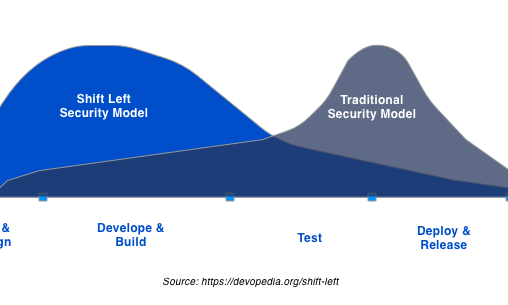With cyberattacks getting more sophisticated, the number of companies open to pentesting grows. Also known as “ethical hacking,” penetration testing discovers critical system vulnerabilities and helps patch them up before cybercriminals get to them. As a cybersecurity vendor, Iterasec is happy to see that enterprises take penetration testing seriously, and its market is expected to reach $4.5 billion by 2025.
But with great demand comes supply, and we might soon witness an abundance of underqualified pentesting vendors. How do you choose the right one, and how can you make the most out of your cooperation? In this blog post, we share four tips on making your application and network pentest truly valuable and effective.
Why the right penetration testing is important for your cybersecurity
Understanding the importance of effective penetration testing requires a deep dive into the specific benefits it offers in protecting your enterprise’s digital assets. This proactive security measure is critical in identifying exploitable vulnerabilities and evaluating your organization’s ability to detect and respond to attacks in real-time.
Penetration tests, when conducted correctly, offer a realistic assessment of your security. They help identify the weaknesses in your technology stack, the processes, and the human factors that form your cybersecurity defenses. This comprehensive evaluation is crucial because it highlights gaps across the full spectrum of your security measures.
Furthermore, the right penetration testing strategy involves more than random, haphazard attacks on your systems. It requires a structured, methodical approach that aligns with international best practices, such as those outlined by the OWASP or the NIST frameworks. By following these guidelines, your penetration tests can provide consistent, reproducible results that are actionable and valuable.
Penetration testing also plays a significant role in security awareness and training within an organization. By actively involving your IT teams in the testing process and reviewing the test results, they become more aware of the threats your company faces. This awareness is valuable in fostering a culture of security mindfulness throughout the organization.
Finally, regular penetration testing ensures that your security measures adapt over time. As new technologies emerge and your business environment changes, the threats you face will also evolve. Regular testing allows you to adjust your defenses in response to these changes, ensuring your security practices remain robust and responsive.
Pen Testing Best Practices
To conduct effective penetration testing that genuinely strengthens your cybersecurity defenses, it’s critical to follow established best practices. Here’s how you can implement a structured and efficient approach to your pen testing efforts:
Elevate your cybersecurity strategy — connect with our experts to craft a tailored defense to keep you ahead of emerging threats.
Define the Objectives and Goals of the Pen Test
Setting the right objectives is your first step to achieve penetration testing best practices.
Answer yourself this: Why do you need pentesting, and what exactly do you want to gain with it? Is it just a formal pentest for compliance? Or is it a constructive pentest that will let you evaluate your security posture?
The two objectives are very different. The first one is as simple as checking the necessary checkboxes, while the second can influence product success. They also require different skills and sometimes even mindsets.
Additionally, you should consider the level of input you’re willing to provide. It will determine if the pentesting is going to be:
- Black box (when no information about the system is provided)
- White box (when full system background information about the system is provided)
- Grey box (when the pentester has limited knowledge of the system)
These modes will also have different outcomes: black box pentesting can make a good simulation of an attack, but it might also mask some issues because of time limits. Cybercriminals, on the other hand, usually have loads of time and inspiration to meticulously hack into your system.
Define Scope and Budget
Establishing the scope of the penetration test is crucial to ensure that all critical systems are included and that the test remains within budget. Defining scope helps prioritize resources towards high-risk areas, ensuring the test covers all necessary aspects without unnecessary expenditure.
Follow a Pen Test Methodology
Adhering to a recognized methodology, such as the PTES (Penetration Testing Execution Standard) or OWASP’s testing guide, ensures the penetration test is thorough and consistent. These methodologies provide a framework that covers planning, discovery, attack, and reporting phases, ensuring you follow penetration testing best practices to its fullest.
Ensure Skilled Delivery Management
Pentest is a project, not magic. And just like any other project, it has to be managed properly, so look for a vendor who knows how to do it.
Here are some indicators of finely-tuned pentest project management:
- The assigned project manager (PM) or delivery manager (DM) is knowledgeable in information security. It is important since a skilled PM should detect when the team stalls and starts running in circles and refocus the team to look in other directions.
- There are enough meetings (starting/result meetings) as well as regular interim status updates.
- The team sticks to the rules: working during the specified hours, pentesting from dedicated IP addresses, etc.
- All deadlines are met thanks to realistic estimates and excellent planning skills.
- The team handles re-tests on time.
- Client feedback is carefully gathered for retrospectives and improvements.
Create a Communication Plan
Communication is vital during penetration testing. Establishing a clear communication plan ensures that all stakeholders, from IT staff to executive management, are informed of the test’s progress and findings. Effective communication helps in quick decision-making and swift remediation of uncovered vulnerabilities.
Prepare for the Pen Test
Preparation involves everything from ensuring backup systems are in place to obtaining necessary legal permissions. Proper preparation ensures that the testing process does not disrupt normal business operations and that all legal and compliance requirements are met.
Select a pentesting team
The next step is selecting the team that will do your system’s pentesting. Your first instinct would be to look for the pentest vendor who works according to numerous methodologies (OSSTMM, OWASP Testing Guide / ASVS, PTES) and can boast professional certifications (CEH, OSCP/OSCE) — the more, the better.
But while these accomplishments are noteworthy (especially when required by regulations), unfortunately, they don’t guarantee anything. Simply put, hackers will not use a formal or certified approach to breach your system. Instead, they will try to find the most practical solution.
We’ve seen brilliant security engineers and pentesters with no certifications and completely useless specialists with lots of certificates on their walls. It’s what they do with the pentesting results that matter most. Do they merely show you the test outcomes, or do they provide actionable insights on closing the gaps found? Aim for the partner that goes with the second scenario.
And before you make your choice, consider these points:
- Check how efficient, creative, and connected to the security reality their approach is. Which vulnerabilities do they typically report? What is their style? How deeply do they investigate the possible attack chains and consequences of exploitation? Do they demonstrate the attacker’s business gains from the vulnerabilities?
- Make sure the pentester knows how to structure a pentest: how to collect enough information about the system or app under pentest, how to perform threat modeling, how to prioritize attack vectors, etc.
- Check if the pentester uses automated tools/scanners — but only as a tool, not as the ultimate instrument for producing pentest reports and generating findings. Pentesting is a combination of art and science, and unique ideas are the key to really juicy findings.
Ensure skilled delivery management
Pentest is a project, not magic. And just like any other project, it has to be managed properly, so look for a vendor who knows how to do it.
Here are some indicators of finely-tuned pentest project management:
- The assigned project manager (PM) or delivery manager (DM) is knowledgeable in information security. It is important since a skilled PM should detect when the team stalls and starts running in circles and refocus the team to look in other directions.
- There are enough meetings (starting/result meetings) and regular interim status updates.
- The team sticks to the rules: working during the specified hours, pentesting from dedicated IP addresses, etc.
- All deadlines are met thanks to realistic estimates and excellent planning skills.
- The team handles re-tests on time.
- Client feedback is carefully gathered for retrospectives and improvements.
Working with a dedicated pentest project manager guarantees the results you get are actionable and will help improve your cybersecurity posture, not merely inform you of the breaches discovered.
Choose a Qualified Pen Test Provider
Professional pentesters shouldn’t be disconnected from the engineering world. It is important because they need to:
- Convey the identified issues to developers and consult them
- Provide balanced recommendations on how to fix the identified issues
- Know where more or less focus is needed
For example, if pentesting discovers your Kubernetes cluster security policies are not configured correctly, the results should include the recommended configuration, not just the tip to reconfigure the policy.
Explore Pen Test Results
After conducting the test, it’s essential to thoroughly review and analyze the results. This analysis should focus on addressing the vulnerabilities and understanding the root causes of security weaknesses. Exploring the results in depth allows organizations to make informed decisions on improving their security posture.
Enhance your cybersecurity today — discover how our expert services can fortify your defenses against emerging threats.
What are the Benefits of Following Penetration Testing Best Practices?
Adhering to best practices in penetration testing is about compliance, fulfilling a checklist, fundamentally enhancing the security and resilience of your organization. Here are some key benefits of following penetration testing best practices:
Enhanced Security Posture
Organizations can significantly improve their security posture by following a comprehensive penetration testing plan. Systematic testing uncovers vulnerabilities that might otherwise go unnoticed until exploited by attackers. Addressing these issues helps prevent potential security breaches and data theft.
Compliance and Regulatory Fulfillment
Many industries are subject to strict regulatory requirements that mandate regular security assessments, including penetration testing. Adhering to penetration testing best practices ensures these compliance requirements are met thoroughly, helping avoid legal and financial penalties.
Cost-Effectiveness
While penetration testing requires an upfront investment, following pen testing best practices is ultimately cost-effective. Identifying and mitigating vulnerabilities early can save organizations from the much larger costs associated with a data breach, such as system downtime, recovery operations, and reputational damage.
Informed Risk Management
A structured pen test plan offers detailed insights into an organization’s risk landscape. By understanding where vulnerabilities lie and how they can be exploited, businesses can make more informed decisions about where to allocate resources and how to prioritize their cybersecurity efforts.
Strengthened Stakeholder Confidence
Customers, investors, and partners need assurance that their data is handled securely. Demonstrating a commitment to cybersecurity by following best practices for penetration testing can significantly enhance stakeholder trust. It is particularly crucial in industries where the protection of sensitive data is paramount.
Better Preparedness
Regularly conducting penetration tests according to pen test best practices prepares organizations to defend against attacks and respond efficiently if an attack occurs. This preparedness is critical in minimizing the impact of any security breach and ensuring a quick recovery.
Continuous Improvement
Penetration testing is not a one-time activity but a continuous process of improvement. Best practices encourage regular updates to the penetration testing plan, reflecting new threats and changes in the organization’s IT environment. This continuous improvement helps keep security measures up-to-date and effective against evolving cyber threats.
Conclusion
Penetration testing is a serious and sensitive issue. It’s easier to prevent cybersecurity breaches than patch up the broken reputation of a company that doesn’t protect data well enough. It is also sensitive since you can’t let just anyone do your system’s pentesting, especially if it’s a white box.
That’s why, if you want to follow pen testing best practices, we recommend choosing a pentesting partner with a solid reputation like the one Iterasec is proud to uphold. Contact us, and we will help you get the most value out of your next application pentesting!



